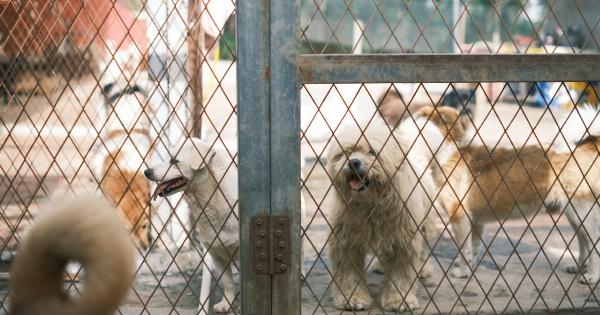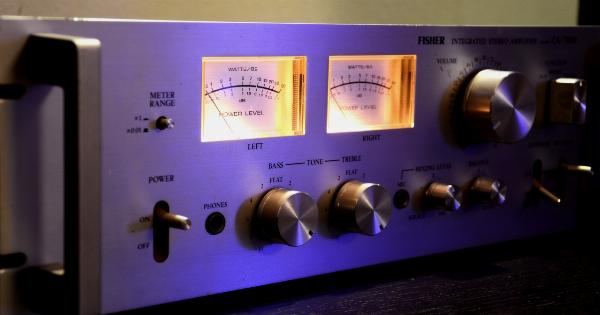Dogs are known for being expressive creatures. They communicate their emotions, needs, and intentions through various signals, including body language, vocalizations, and behaviors.
One fascinating aspect of canine communication is their use of calm signals.
What are Calm Signals?
Calm signals are subtle and non-threatening behaviors that dogs use to diffuse tension, maintain peace, and avoid conflict. These signals are often displayed in situations when a dog feels stressed, uncomfortable, or overwhelmed.
By using calm signals, dogs can communicate to other dogs or humans that they mean no harm and are not looking for a fight.
The Importance of Recognizing Calm Signals
Recognizing and understanding dog calm signals can be incredibly beneficial for dog owners, trainers, and anyone who interacts with dogs.
Being able to interpret these signals allows us to respond appropriately, creating a more harmonious and stress-free environment for our furry friends. It also helps prevent potential conflicts, especially in multi-dog households or public spaces with other dogs around.
Common Dog Calm Signals
While calm signals may vary from dog to dog, there are several common behaviors that dogs often use to communicate their desire for calm and relaxation:.
1. Yawning
Yawning is not always an indication of tiredness in dogs. Often, dogs yawn as a way to relieve stress and communicate that they are not a threat.
If you notice your dog yawning in a situation that seems stressful, it’s a good idea to provide them with some space or remove them from the situation entirely.
2. Lip Licking
When a dog licks their lips in the absence of food, it can be a sign of anxiety or unease. It’s essential to pay attention to this signal, especially during interactions with other dogs or unfamiliar humans.
It’s a clear indication that your dog may be feeling uncomfortable and needs some support or a change in the environment.
3. Turning Away
When a dog turns their head or body away from something or someone, it’s a way of saying, “I want to avoid conflict or confrontation.” This gesture is often seen when a dog is meeting a new dog or person.
Respecting their space and allowing them to approach at their comfort level is crucial.
4. Slow Movements
Dogs in a state of calmness tend to move slowly and purposefully. Rapid or jerky movements can trigger anxiety or stress reactions. By moving slowly, dogs communicate that they are non-threatening and in a relaxed state.
5. Squinting or Blinking
Squinting of the eyes or slow blinking is a common calm signal dogs use. It is a way to communicate that they are not looking for a confrontation.
This subtle signal often goes unnoticed, but paying attention to it can significantly improve our ability to understand dogs.
6. Play Bows
While play bows are typically associated with playful behavior, they also serve as a calm signal. A dog will often offer a play bow before engaging in play or to diffuse a potentially tense situation. It’s a way of saying, “I come in peace.”.
7. Sniffing the Ground
When a dog sniffs the ground, particularly in situations where they might feel anxious or overwhelmed, it can be a sign that they’re trying to redirect their attention and find a sense of calm.
Allowing them the time they need to explore through sniffing can be beneficial.
8. Freezing
Freezing is a common response to stress or fear in dogs. It’s a last-ditch effort to avoid confrontation by becoming completely still and unresponsive.
Recognizing when a dog is freezing can help us remove them from the triggering situation and provide them with the appropriate support they need.
9. Sitting or Lying Down
In many cases, when a dog feels calm and at ease, they will naturally choose to sit or lie down. This posture signifies relaxation and contentment. Encouraging your dog to find a comfortable resting spot can help them feel safe and secure.
10. Soft Body Language
Dogs with relaxed and calm body language exhibit loose, wiggly movements. They do not display signs of tension, stiffness, or raised fur. Observing a dog’s overall body posture can provide valuable insight into their emotional state.
Conclusion
Calm signals are an integral part of a dog’s communication repertoire. By familiarizing ourselves with these signals, we can bridge the gap between human and canine understanding, creating a more empathetic and harmonious relationship.
It’s essential to remember that while these signals are helpful in gauging a dog’s emotional state, each dog is an individual, and the context should always be taken into account. By unlocking the secrets of dog calm signals, we can enhance our ability to communicate effectively with our canine companions.






























